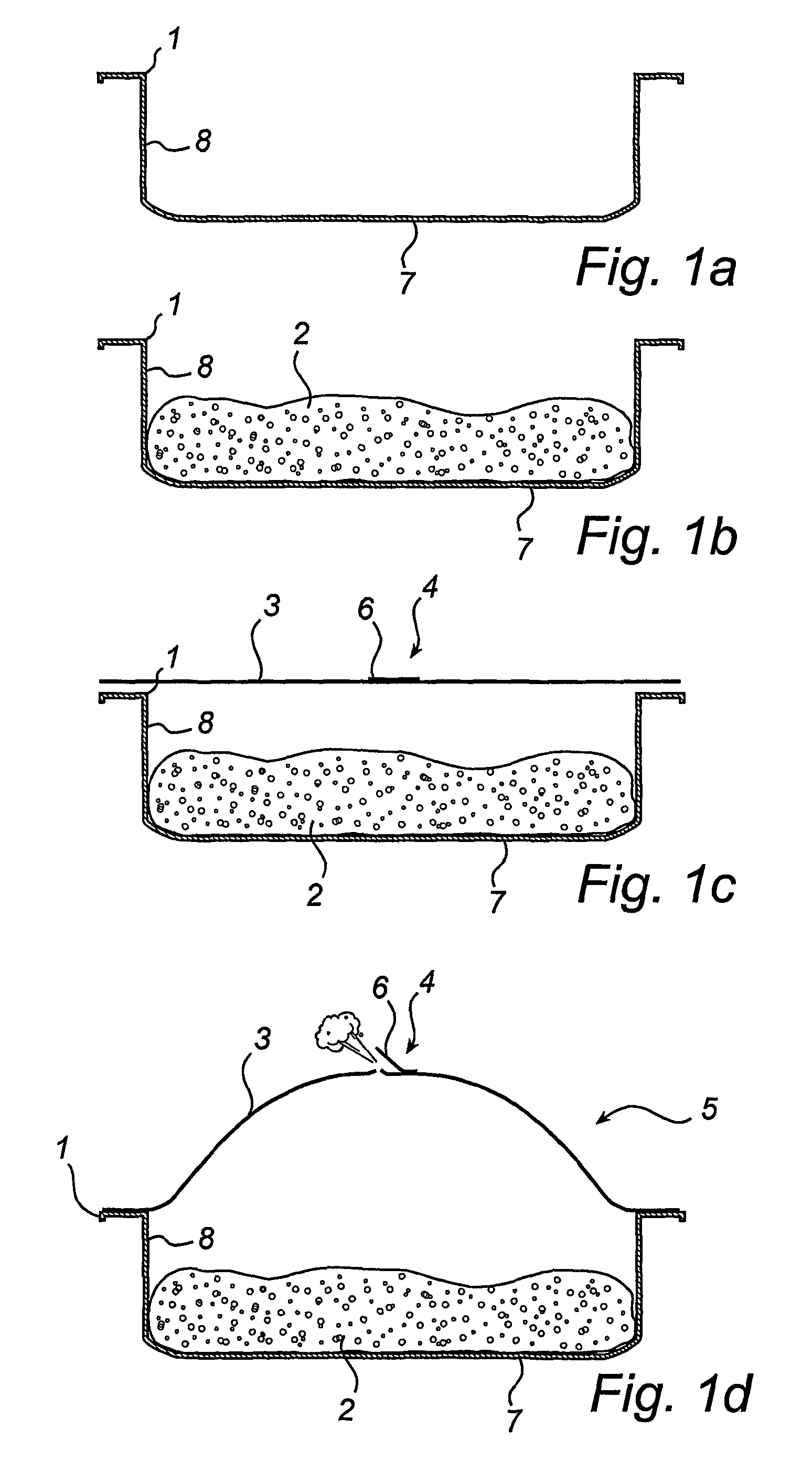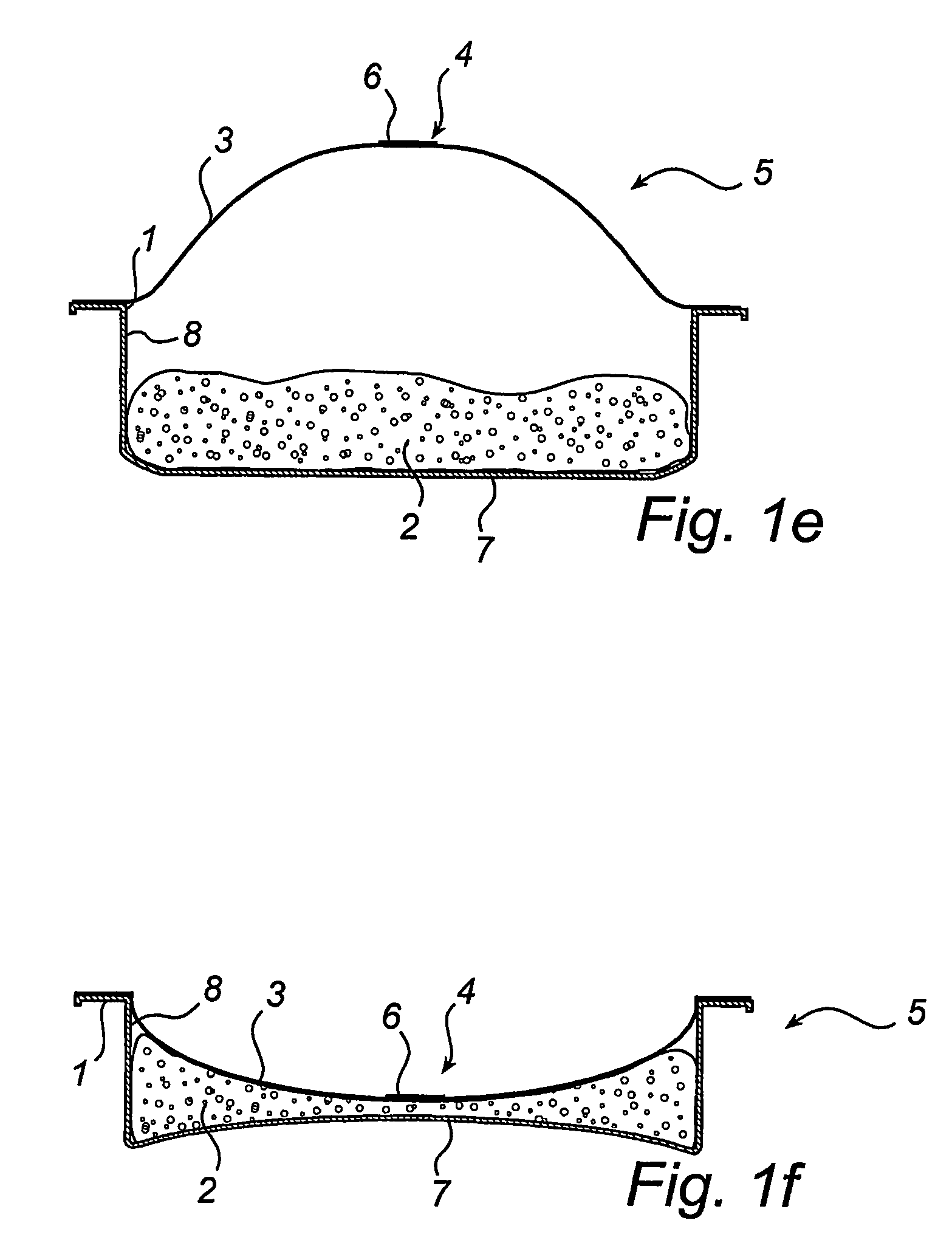Food packaging method
a food and packaging technology, applied in the field of food packaging methods, can solve the problems of increasing the complexity of the manufacturing process, increasing the cost of production of packages fitted with integrated special materials, and uneven heating of the contents of the packages, so as to achieve the effect of less space, less heat loss, and simple production
- Summary
- Abstract
- Description
- Claims
- Application Information
AI Technical Summary
Benefits of technology
Problems solved by technology
Method used
Image
Examples
Embodiment Construction
[0020]FIG. 1a illustrates a tray 1, which is filled with the desired food 2, FIG. 1b, to a filling degree of about 40-60%, depending on the kind of food 2 to be packed. FIG. 1c shows the manner of application on the tray 1 of a flexible cover layer 3 fitted with a one-way valve 1. The package 5 thus formed is then exposed to the effects of microwaves whereby the food 2 is pasteurised, FIG. 1d, and the valve 4 permits vapour to exit from the package 5. The valve 4 is in the form of a tape applied across a slit made in the flexible cover layer 3. At the same time as the heating by means of the microwaves ceases, the valve 2 closes, see FIG. 1e. Preferably the movable part 6 of the valve 4, i.e. the adhesive layer 6, is designed to automatically reclose the valve, when the heating ceases and the excess pressure inside the package 5 decreases somewhat. Alternatively, this effect could be achieved by purely mechanical means that close the valve 4 as the package is being conveyed on a pro...
PUM
 Login to View More
Login to View More Abstract
Description
Claims
Application Information
 Login to View More
Login to View More - R&D
- Intellectual Property
- Life Sciences
- Materials
- Tech Scout
- Unparalleled Data Quality
- Higher Quality Content
- 60% Fewer Hallucinations
Browse by: Latest US Patents, China's latest patents, Technical Efficacy Thesaurus, Application Domain, Technology Topic, Popular Technical Reports.
© 2025 PatSnap. All rights reserved.Legal|Privacy policy|Modern Slavery Act Transparency Statement|Sitemap|About US| Contact US: help@patsnap.com



